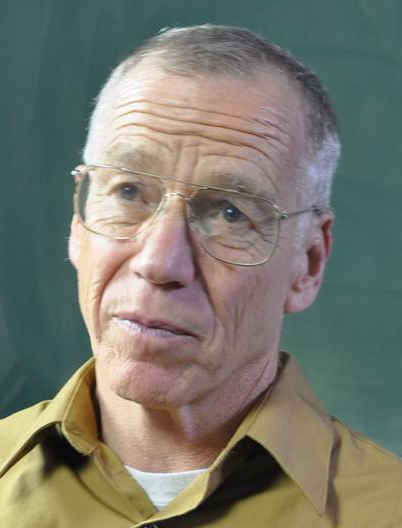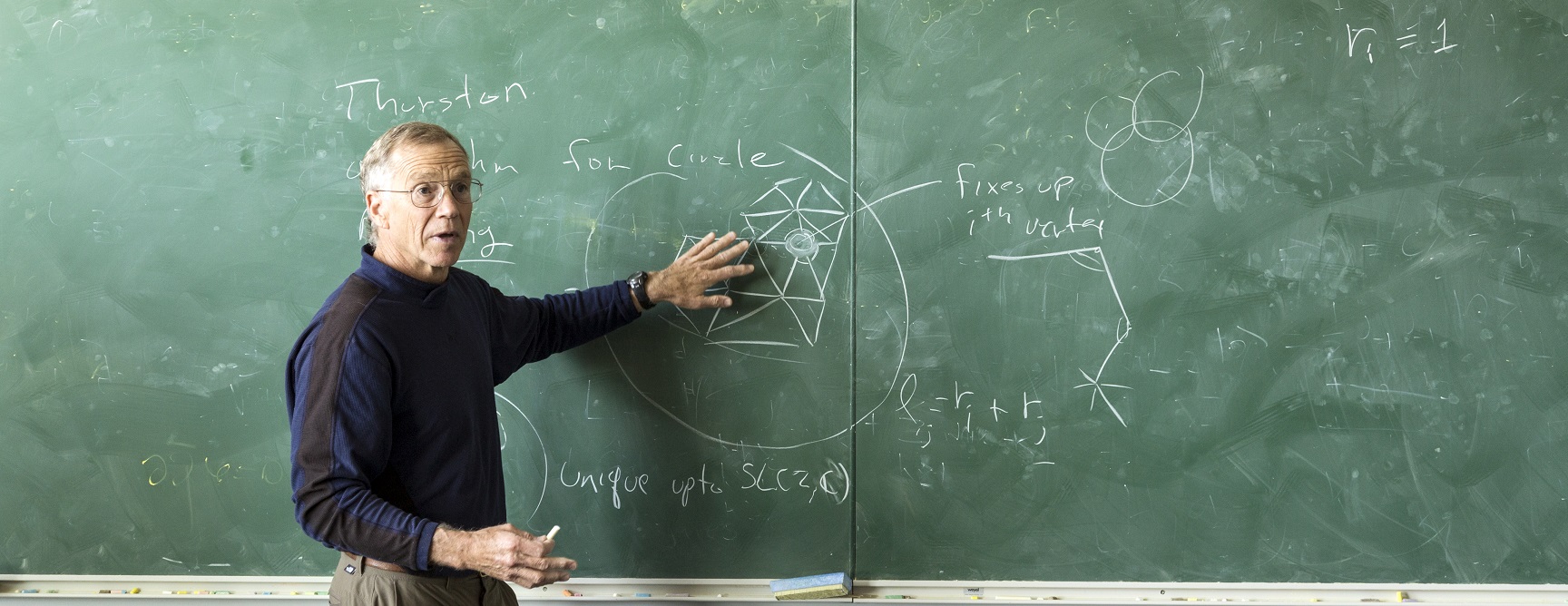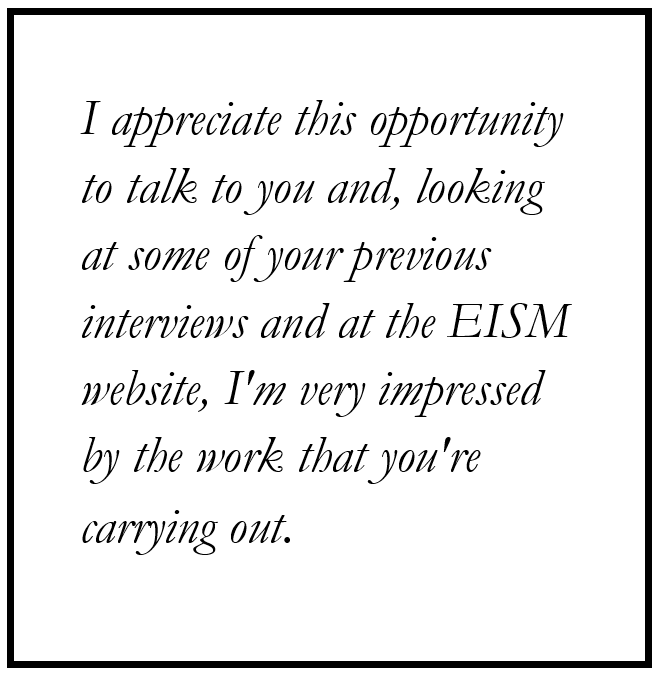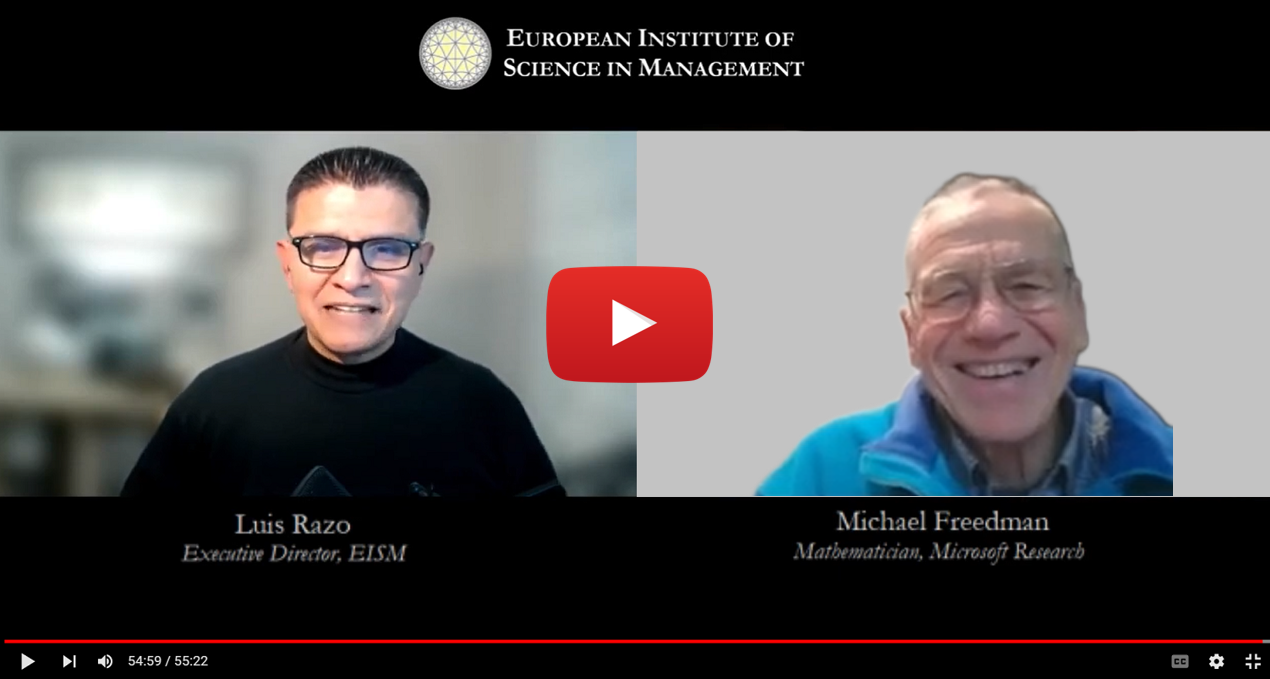
Dr. Michael Freedman is an American mathematician and founding director of Microsoft’s Station Q, where he became an instrumental figure behind the company’s “topological” approach to quantum computing. In 1986, Freedman was awarded the prestigious Fields Medal for his solution of the Poincaré conjecture in four dimensions.
Freedman received a Ph.D. from Princeton University. Following appointments at the University of California, Berkeley (1973–75), and the Institute for Advanced Study, Princeton, New Jersey (1975–76), Freedman became a professor at the University of California, San Diego, in 1976. In 1998 he became the first Fields Medal winner to leave the academic world when he accepted a position with the Theory Group at Microsoft Research, a division of Microsoft Corporation.
Freedman has received numerous awards and honors including Sloan and Guggenheim Fellowships, a MacArthur Fellowship, and the National Medal of Science. He is an elected member of the National Academy of Sciences, and a fellow of the American Academy of Arts and Sciences and of the American Mathematical Society. In addition to winning a Fields Medal at the International Congress of Mathematicians (ICM) in 1986 in Berkeley, he was an Invited Speaker at the ICM in 1983 in Warsaw and at the ICM in 1998 in Berlin.
He currently works at both Microsoft Station Q and at the University of California, Santa Barbara, where he is involved in the development of a topological quantum computer.
* The following text has been edited and excerpted from the full interview, which may be viewed here or by clicking on the video thumbnail image below.

You recently began a presentation on the connection between physics and social science by quoting Einstein. Can you tell us about that?
Yes, I was speaking to a group um of economists and much of the conference focused on ideas of plurality that Glen Weyl has been pursuing – that is, different ways different ideas for enhancing the depth of our social organization. It struck me that Einstein hit the nail on the head years ago when, at a disarmament conference, he bemoaned our lack of social progress compared with technological progress. Einstein commented on how dangerous a combination the two were and here, years later, he was speaking before atomic weapons, and years later we have this unsolved problem of our nuclear arsenal. one of my grown sons told me that um Dad I’m not going to solve this problem that’s a problem for your generation your generation built these things you have to figure them out I’ll worry about uh safety of AI and stuff like that but you have to take care of nuclear weapons before you go so that’s a big problem that we don’t think about enough. Of course, the war in the Ukraine kind of gave us a jolt. It’s hard to think about possibilities that are so dire. It’s the zero/infinity problem that we hope the chances of it happening are close to zero but the consequences are close to Infinity. The human mind can’t wrap itself around a thousand holocausts, which would be what it would amount to kill six billion people with some estimates running that high for a full-scale nuclear war. I just wanted to remind the conference of what the stakes were for doing their subject properly. I think what their subject is about is how to bring people together in a less divisive and acrimonious way.
Can you elaborate on how your recent collaboration with Glen Weyl and quadratic social science came about?
Yes, I’m very happy to because this was the most exciting moment for me in this whole process. When I started talking to Glen about everything quadratic, he said I should read this paper that he wrote with Buterin and Hitzig, maybe two years earlier, on quadratic finance to get the context and see the differential equations and how they solve them and all that. The thing that struck me in this paper was just a small line saying that you could think of an equation from which you could deduce quadratic finance, its solution. It was an equation for judging the social benefit of an allocation function. So you have individual contributions, the amount individuals are willing to contribute to projects, and then you need a mechanism for turning that into a decision about a social allocation. How much should the community put forward, given these individual contributions? Basically, they said that you could reinterpret this equation as Kant’s categorical imperative.
I thought it through and I agreed. To me, this was an astonishing moment. I’d grown up with my father, a philosopher really, whose main interest in life was Godel’s theorem and logic and the history of philosophy and logic up to Godel. He had the same project as Spinoza, my father did, which was to deduce how to act in the world from a set of starting points. Spinoza wrote about this in his Ethics and my father spent the last years of his life on his Ethics and he wanted to use his mathematical knowledge to push Spinoza’s program forward.
Frankly, I’m not able to judge how much progress Spinoza made or how much progress my father made, but I was never able to understand any example from Spinoza’s writing. I was never able to follow any single deduction that you should behave in such and such a way because of a mathematical principle. I didn’t know the definitions he had in mind. I couldn’t understand the meanings of his words. Maybe it was my mathematical mind that prevented me from just relaxing and going with the flow, but I did not see a concrete instance of this goal. So the idea that quadratic finance could be deduced from the categorical imperative, I thought, wow, now I have a concrete example of this very important philosophical goal that has obsessed philosophers for millennia. At that moment, I was in. I wanted to see where it led.

What is unique about quadratic voting?
It’s really a tax on extremism, if you think about it. You can place all your votes in front of one candidate, let’s just use Donald Trump as an illustration, but if you’re inflexible and it’s “my way or the highway”, then you have a limited influence because of the distribution scheme and quadratic voting. If you have two or three candidates that are acceptable to you, you have more influence. So I really like that idea and I first learned of it from an article in The Economist. I noticed they quoted a guy named Glen Weyl, who I hadn’t heard of. But I noticed was in my company and I sent him an email and we started talking and we have become really good friends. I’m looking forward to meeting him in a conference that he and several people have organized in California in Berkeley, a conference on plurality.

What do you mean by a quadratic wormhole between QM and plurality?
In this context, a “wormhole” is just a beautiful metaphor. It was actually in the press recently to describe some nine-qubit experiment, which the audience may have heard about. We’re using the wormhole idea as a loose sort of science-fictiony idea. It’s a way to get from distant realms very quickly. People think of it as a puncture through space-time that allows you to take your spaceship through from one end to the other. This was actually Glen Weyl’s metaphor to ask if there is any way to transport ideas back and forth across the wormhole. That is, can we take concepts in quantum mechanics and say there’s an analogous question in social engineering? Can we bring the calculations and the concepts from quantum mechanics from one side of the wormhole to the other, or perhaps a little less likely, but also possible, that an idea on the social side could inspire some rigorous concept in the more mathematical world of quantum mechanics. That’s not entirely unknown and important tool in optimization. Even in pure mathematics, there is the Ford-Fulkerson algorithm related to solving maximum flow problems, invented in economics but has gone through a wormhole and has come out in quantum gravity and in other places in differential geometry and mathematical physics.
There’s also a related idea which has been put forward for the last years by Lenny Susskind at Stanford saying that quantum entanglement is kind of a micro hole, or a wormhole, when you have two particles like up-down minus down-up that have been entangled. Susskind visualizes that as some kind of non-local connection between them, and this idea has now become mainstream in connecting quantum information and quantum gravity. You see a lot of papers on quantum gravity where they exhibit a hyperbolic geometry design like an Escher picture of tensor networks filling up the hyperbolic space. The idea is that entanglement of states on the boundary, the CFT, go through the bulk, the aDs, through entanglement across these networks. And these lines, these connections of tensor legs. Actually, I called them, in a paper I wrote years ago with Matt Headrick, we called them bit threads, though you might call them qubit threads. So the idea that quantum information and quantum gravity are tied is pretty extensively studied. We’d like to ask whether any of these ideas could be transported back into the social realm. The first thing that we sort of settled on, Glen and Michal Fabinger and I, as the key test is to properly interpret the notion of phase on the social side of the things.

What is your favorite interpretation of QM?
One that appeals to me a lot is developed by Zurich and his collaborators, which he calls Quantum Darwinism and which is sort of a survival or struggle for recording oneself. The self here is just an elementary process. It’s recording so most of what happens in the universe disappears because the universe can’t remember everything that’s happened and still do new things. Zurich postulates a struggle to be recorded, like an existential angst at an Elementary level. It’s a very curious starting point, and I’ve wondered whether quadratic thinking could lead to a modification of it where it’s not so much a Darwinian struggle but some kind of collective effort – more pluralistic than Darwinian. But I’d say the jury’s out. I mean we need to keep thinking.
Would you agree that an interpretation of physics that can help protect humanity from extinction is preferable to an interpretation that cannot, other things being equal?
As a scientist, one tries to stay divorced from the consequences of one’s interpretation. That is, you try to find the most parsimonious interpretation in some ways. But it might not be edifying. For instance, Everett all-possible-worlds is, in some ways, parsimonious and in some ways extravagant. It’s extravagant because of all these worlds, but it’s parsimonious in that you don’t have to come up with answers for things like, well, where did the unrealized probabilities go when you make a measurement? They just went off into the other world. But that’s kind of a fatalistic and may lead to a fatalistic mindset that everything happens, so why try to intervene and prevent a bad thing from happening? I think that was sort of the meat of your question: is there a way of thinking about the knowledge we have, a mindset, that will help us move forward in a constructive way. That’s an interesting attribute of a physical theory that hasn’t normally been considered in science – whether it’s beneficial to our psychology.
If that gives us flexibility to adopt a moral view that’s better for us and better for the survival of the humanity, I agree with you, there’s seems little cost in taking that choice.



